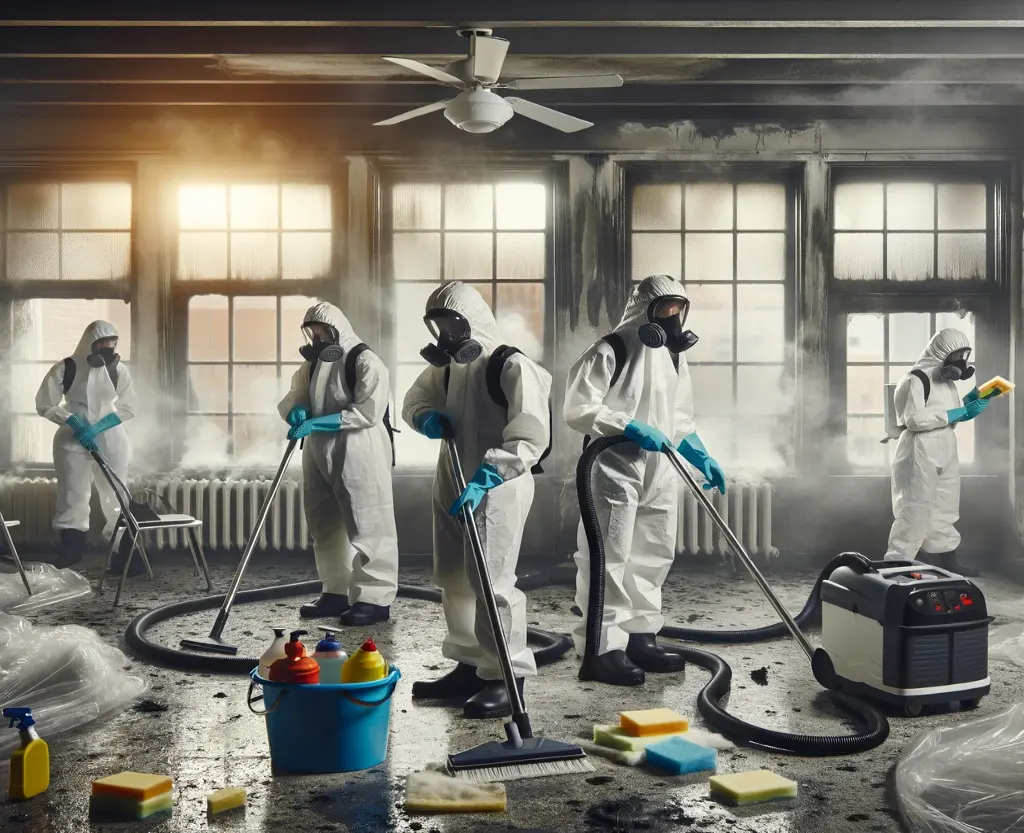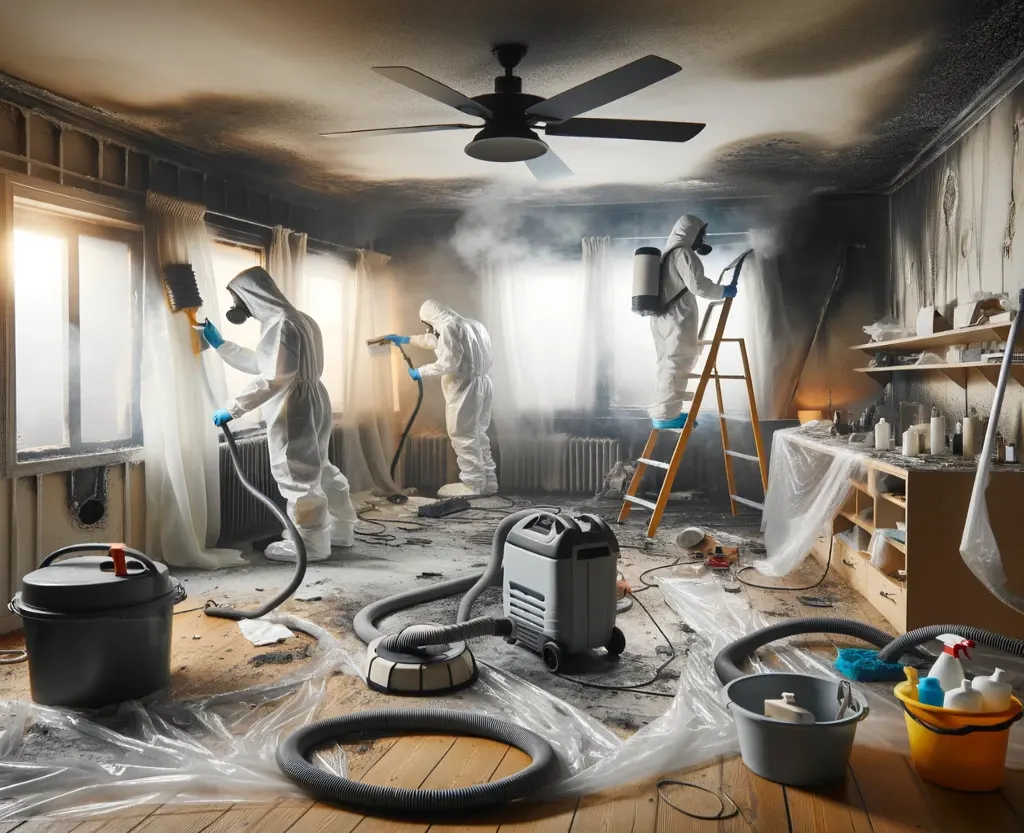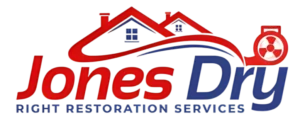
Smoke damage cleanup can be an overwhelming issue to deal with, especially after a fire. This guide provides a comprehensive, step-by-step process for effectively cleaning up smoke damage, ensuring your home is restored to its pre-damage condition. In this article, we will offer expert advice and practical steps to help you manage and mitigate smoke damage and fire damage restoration.
What is Smoke Damage?
Understanding Smoke Damage
Smoke damage refers to the physical damage caused by smoke, which can permeate building materials and personal belongings even if they are not directly burned by flames. Smoke damage can lead to discoloration, corrosion, and persistent odors that require thorough cleaning and restoration.
Types of Smoke Damage
- Dry Smoke: Results from fast-burning, high-temperature fires. It leaves a fine, powdery residue that is relatively easy to clean but can seep into small crevices.
- Wet Smoke: Produced by low-temperature, smoldering fires, often involving plastics and rubber. It leaves a sticky, greasy residue that is difficult to clean.
- Protein Smoke: Common in kitchen fires, it doesn’t leave visible residue but discolors paints and finishes and has a strong odor.
- Fuel Smoke: From burning oil or petroleum, found in garages or industrial areas. It is particularly difficult to remove from porous surfaces.
Immediate Steps to Take
Ensuring Safety
Before starting any smoke damage cleanup, ensure the safety of everyone involved. Wear personal protective equipment (PPE) including gloves, masks, and goggles. Ventilate the area by opening windows and using fans to disperse smoke particles.
Initial Cleanup
- Remove Loose Soot: Use a high-efficiency particulate air (HEPA) vacuum to remove loose soot from surfaces. Be gentle to avoid embedding soot into materials.
- Protect Undamaged Areas: Seal off rooms unaffected by the smoke to prevent contamination. Use plastic sheeting and tape to block off doorways.
Detailed Cleaning Process
Walls and Ceilings
- Dry Sponge Cleaning: Start with a dry-cleaning sponge designed for smoke damage. Wipe gently over the walls and ceilings to remove the initial layer of soot. Rotate the sponge frequently to avoid reapplying soot.
- Cleaning Solution: Mix a solution of 4-6 tablespoons of trisodium phosphate (TSP) and 1 cup of household cleaner or chlorine bleach per gallon of warm water. Test the solution on a small area first.
- Washing: Use a sponge to apply the cleaning solution from the floor up to prevent streaking. Rinse with clean water and dry immediately.
Furniture and Upholstery
- Vacuuming: Vacuum upholstery with a HEPA filter to remove soot.
- Baking Soda: Sprinkle baking soda on the fabric, let it sit for 24 hours, and vacuum again to deodorize.
- Cleaning Covers: Wash removable cushion covers in cold water and dry naturally outside.
Hard Floors
- Cleaning Solution: For hardwood and tile floors, use warm water mixed with mild dish soap. Scrub gently and rinse with clean water.
- Drying: Dry hardwood floors quickly to prevent water damage.
Carpets
- Vacuuming: Use a vacuum with a HEPA filter to remove loose soot.
- Shampooing: For deeper smoke damage cleanup, shampoo the carpets with a suitable carpet cleaner. Allow the carpets to dry completely.
Windows and Glass
- Initial Cleaning: Use a cloth with a commercial soot cleaner to wipe the windows.
- Degreaser: Apply a degreaser to remove any remaining residue and rinse with clean water.
Appliances and Non-Porous Surfaces
- Cleaning Solution: Clean these surfaces with a mixture of vinegar and water or a commercial cleaner. Rinse and dry thoroughly.
Clothing and Linens
- Laundry Detergent: Wash clothes and linens in hot water with a strong laundry detergent.
- Baking Soda: Add a cup of baking soda to the wash to help remove odors. Air dry the items outside.
Books and Paper Items
- Baking Soda: Place books in a bag with baking soda to absorb odors. Leave them for several hours before removing.
- Airflow: Alternatively, set books on their tail edge and spread the pages to allow air circulation.
Dealing with Odors
Natural Odor Absorbers
- Baking Soda: Place open boxes or bowls of baking soda in affected rooms.
- White Vinegar: Spray vinegar on non-porous surfaces and let it air dry to neutralize odors.
- Activated Charcoal: Use charcoal in powdered form or linen bags to absorb odors.
Professional Odor Removal
If natural methods don’t work, consider professional solutions like:
- Ozone Treatment: Ozone generators create ozone gas that breaks down smoke molecules, effectively removing the odor.
- Thermal Fogging: Heats a deodorizer and sprays it as a fog to neutralize odors throughout the affected area.
When to Call a Professional
For severe smoke damage cleanup, professional restoration services are often necessary. They have the expertise and equipment to thoroughly clean and restore your home, including services like:
- Soot removal
- Water extraction from fire extinguishing efforts
- Structural repairs
- Deodorization
FAQs on Smoke Damage Cleanup

Can you paint over smoke-stained walls?
Yes, but you must clean the walls thoroughly first. Use a primer designed to block stains before applying new paint to ensure the smoke damage doesn’t bleed through.
Will dry cleaning remove smoke smell from clothes?
Dry cleaning can remove stains but may not be effective for smoke smells. Washing clothes in hot water with baking soda and air drying outside is often more effective.
Is it safe to stay in a house with smoke damage?
It depends on the extent of the smoke damage. For minimal damage, it may be safe to stay while cleaning. For extensive damage, especially if structural integrity is compromised, it’s best to leave and seek professional help.
How much does it cost to clean smoke damage?
Professional smoke damage cleanup costs vary based on the severity and location of the damage. On average, homeowners can expect to pay between $3,157 and $29,118, with a national average of $13,761.
Conclusion
Smoke damage cleanup is a challenging but manageable task with the right approach and tools. Immediate action, thorough cleaning, and proper odor removal are crucial to restoring your home. For severe cases, don’t hesitate to contact professional restoration services, such as Jones Dry Right, a mold and water restoration in Riverview to ensure complete and safe recovery. Contact us today!
